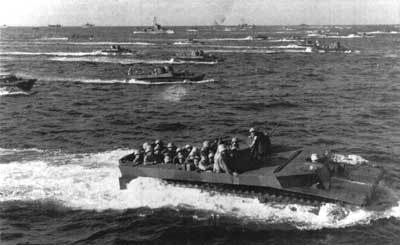Good morning.
Sunday will see gradually sunnier skies and a high of twenty=three in Whitewater.

Via Wikipedia
On this day in 1945, fighting on Iwo Jima ends, assuring that the island was wholly in American hands:
…the west Pacific volcanic island of Iwo Jima is declared secured by the U.S. military after months of fiercely fighting its Japanese defenders.
The Americans began applying pressure to the Japanese defense of Iwo Jima in February 1944, when B-24 and B-25 bombers raided the island for 74 days straight. It was the longest pre-invasion bombardment of the war, necessary because of the extent to which the Japanese–21,000 strong–fortified the island, above and below ground, including a network of caves. Underwater demolition teams (“frogmen”) were dispatched by the Americans just before the actual invasion to clear the shores of mines and any other obstacles that could obstruct an invading force. In fact, the Japanese mistook the frogmen for an invasion force and killed 170 of them.
The amphibious landings of Marines began the morning of February 19, 1945, as the secretary of the Navy, James Forrestal, accompanied by journalists, surveyed the scene from a command ship offshore. The Marines made their way onto the island–and seven Japanese battalions opened fire, obliterating them. By that evening, more than 550 Marines were dead and more than 1,800 were wounded.
In the face of such fierce counterattack, the Americans reconciled themselves to the fact that Iwo Jima could be taken only one yard at a time. A key position on the island was Mt. Suribachi, the center of the Japanese defense. The 28th Marine Regiment closed in and around the base of the volcanic mountain at the rate of 400 yards per day, employing flamethrowers, grenades, and demolition charges against the Japanese that were hidden in caves and pillboxes (low concrete emplacements for machine-gun nests). Approximately 40 Marines finally began a climb up the volcanic ash mountain, which was smoking from the constant bombardment, and at 10 a.m. on February 23, a half-dozen Marines raised an American flag at its peak, using a pipe as a flag post. Two photographers caught a restaging of the flag raising for posterity, creating one of the most reproduced images of the war. With Mt. Suribachi claimed, one-third of Iwo Jima was under American control.
On March 16, with a U.S. Navy military government established, Iwo Jima was declared secured and the fighting over. When all was done, more than 6,000 Marines died fighting for the island, along with almost all the 21,000 Japanese soldiers trying to defend it.

Semper Fi, Marines!
From the website “World War II Gyrene” located at: http://www.ww2gyrene.org/role_marinecorps.htm
“The U. S. Marines Corps was America’s amphibious spearhead of World War II. Its mission was to assault and capture enemy-held islands in the Pacific campaigns. At its peak strength in 1945, the Corps had over 485,000 Marines serving on active duty.
The 6 Marine divisions that served in the war fought, bled and died in some of the toughest battles in the long, brutal history of warfare. They won victories across the Pacific against a fanatical enemy, but at a terrible price; nearly 20,000 Marines died in World War II, and more than 67,000 were wounded.”
God bless the USMC and its members past and present.